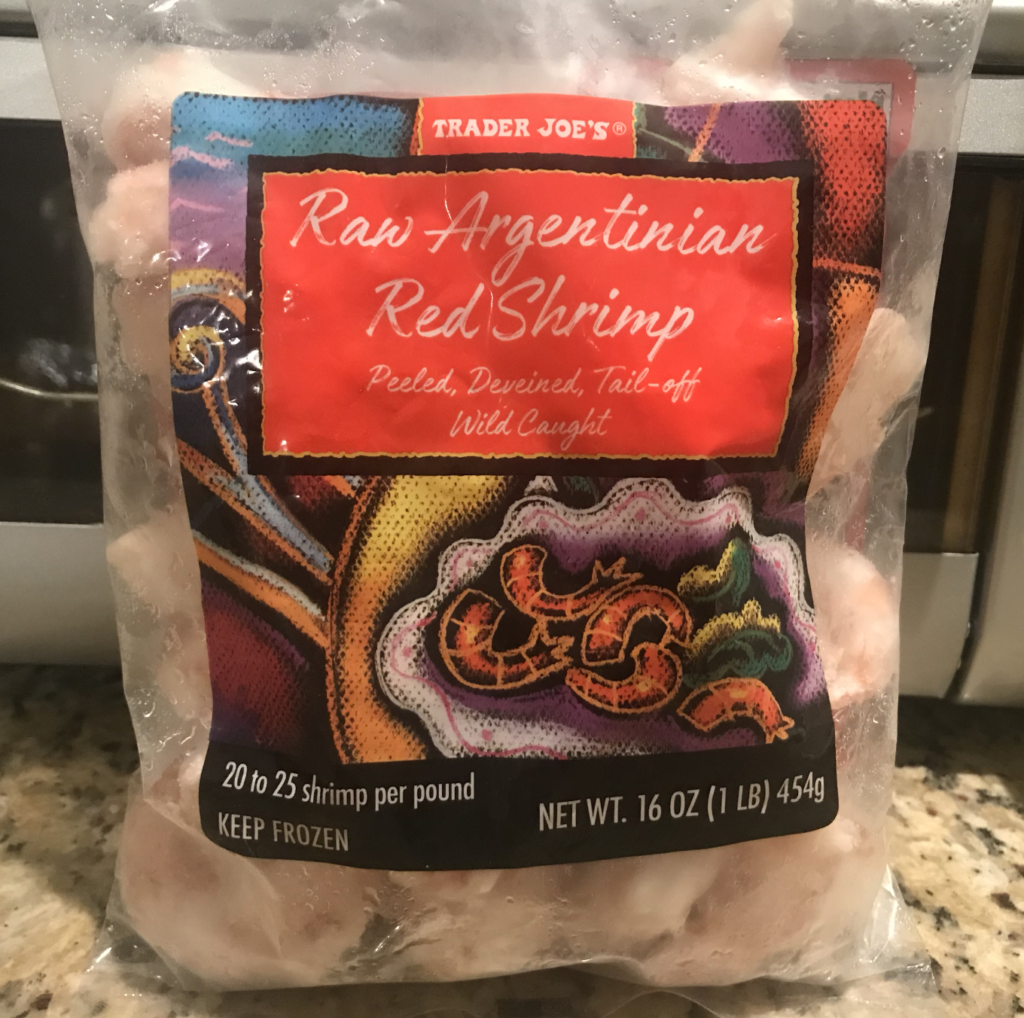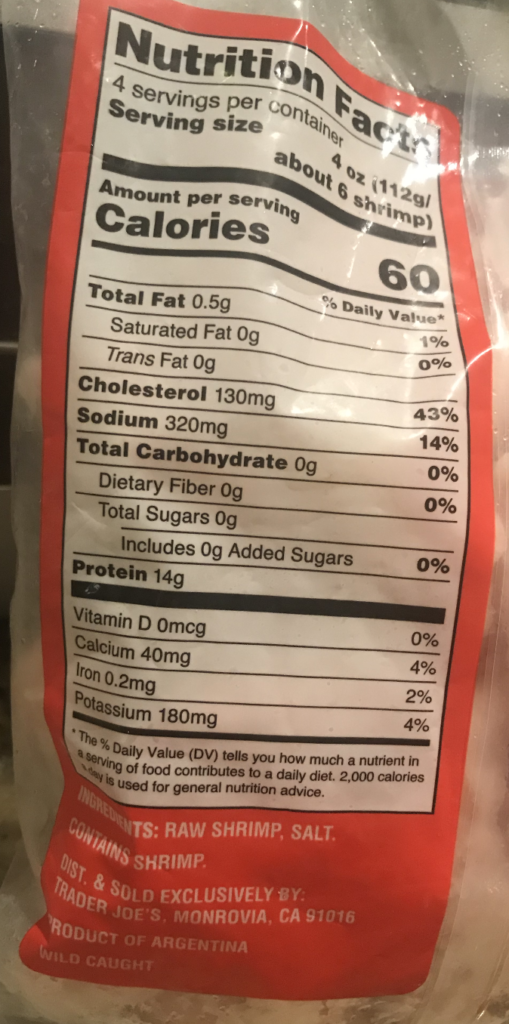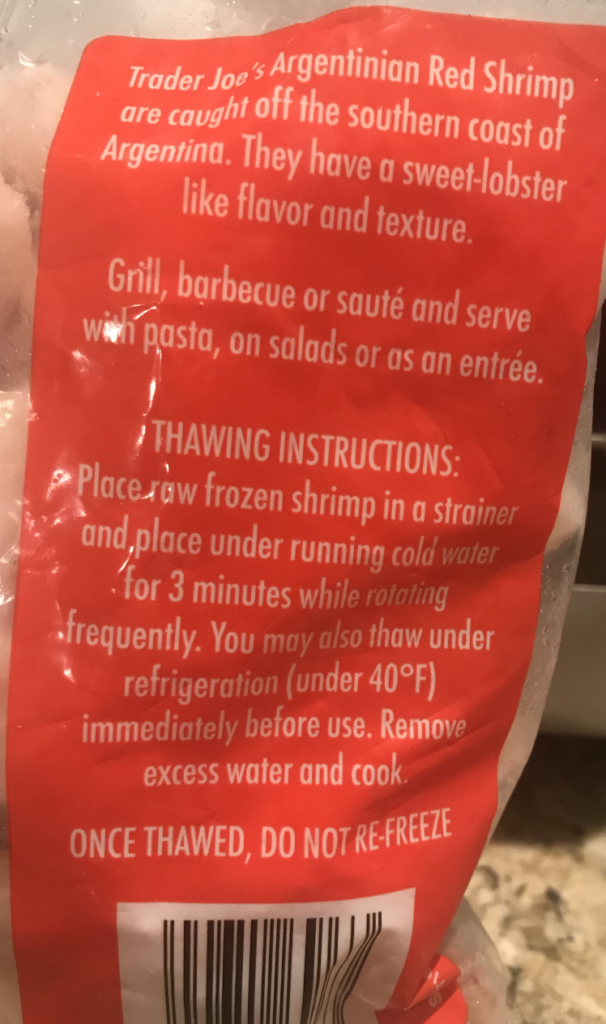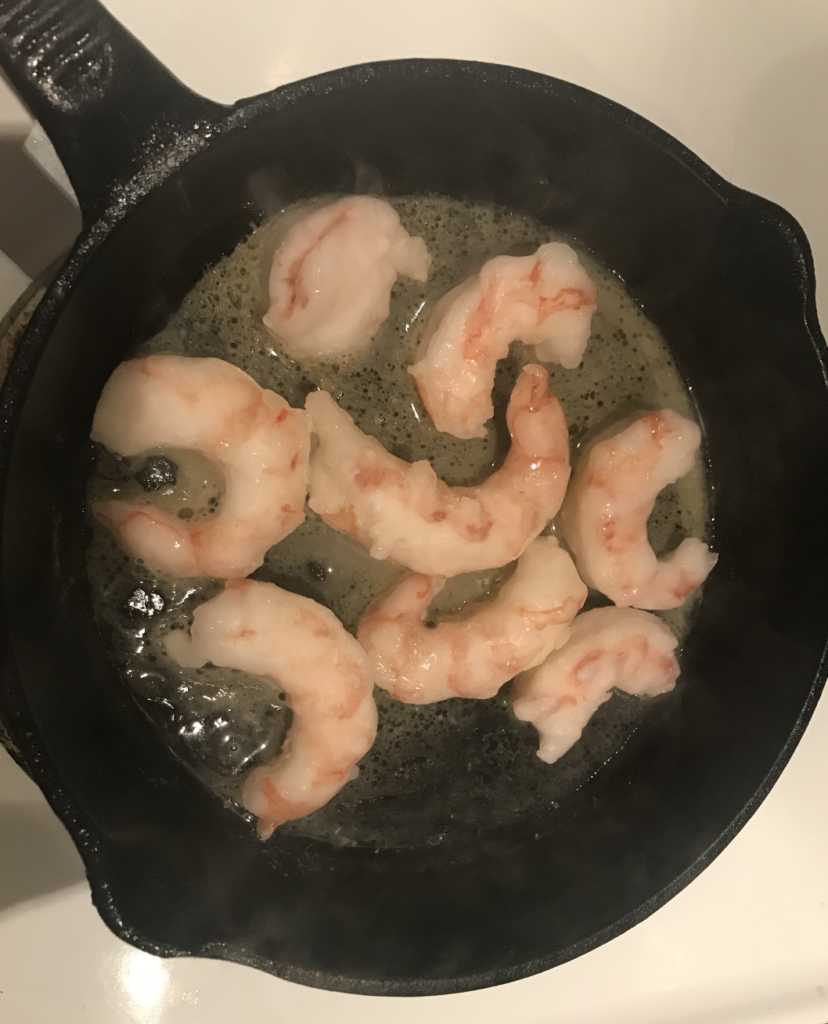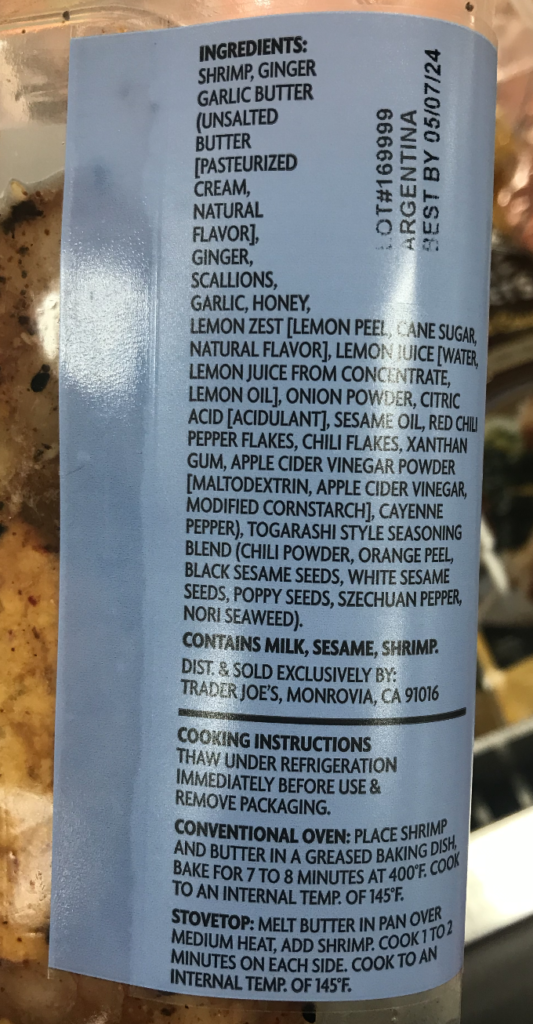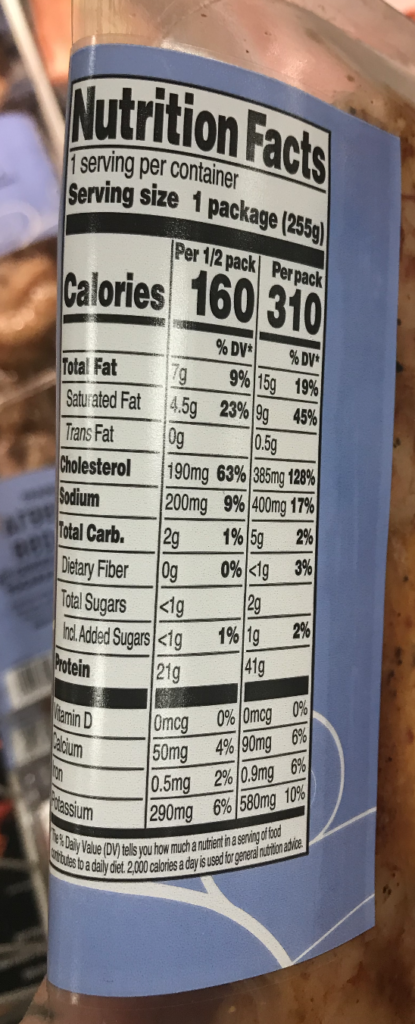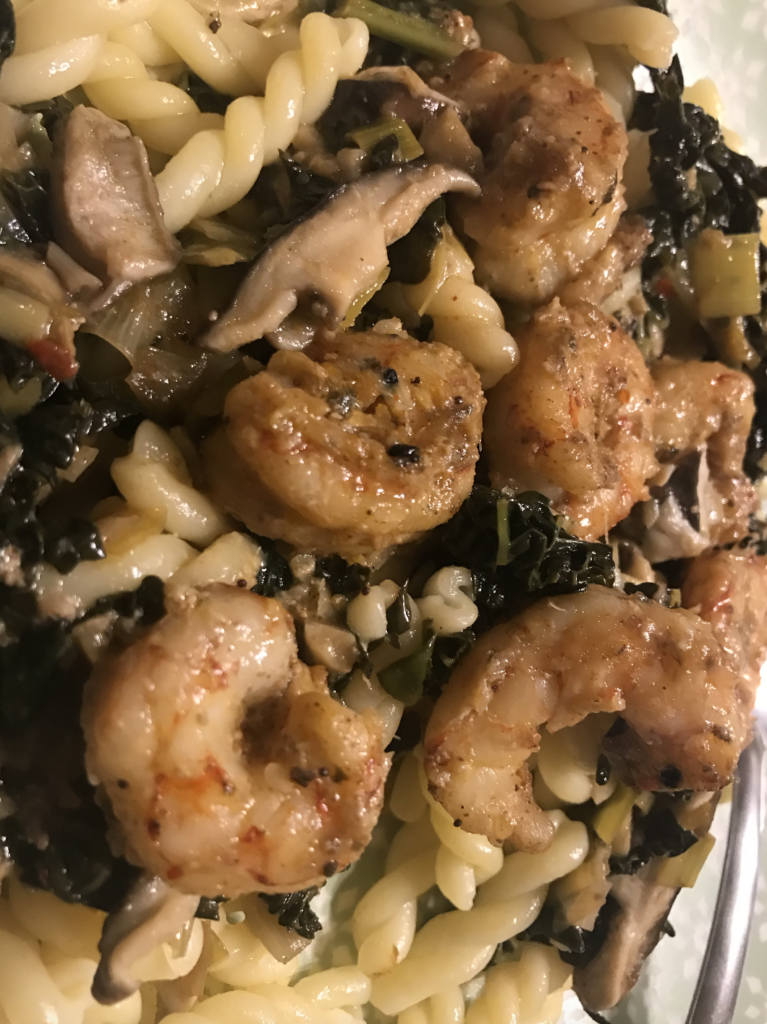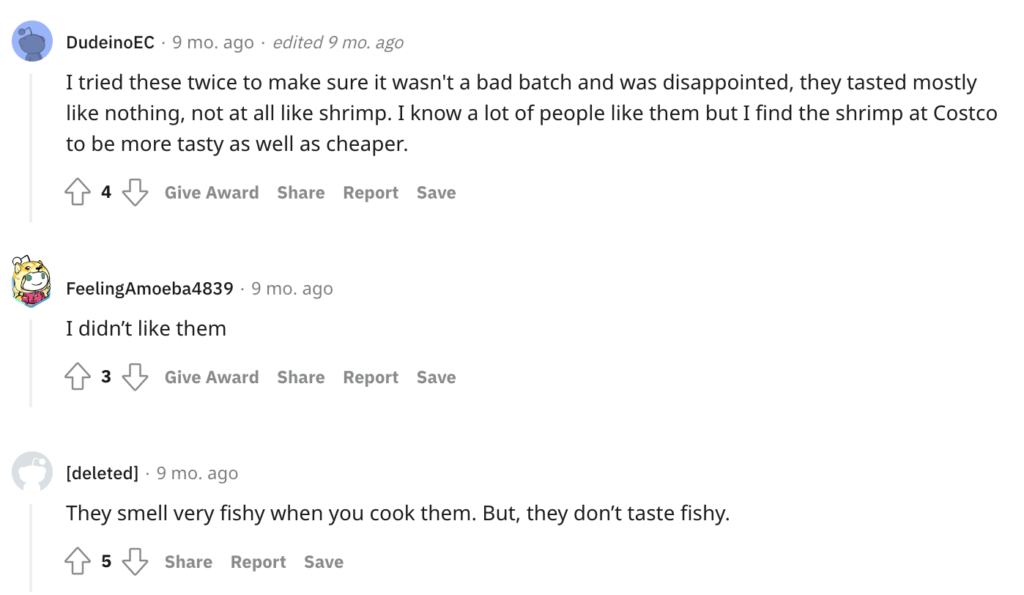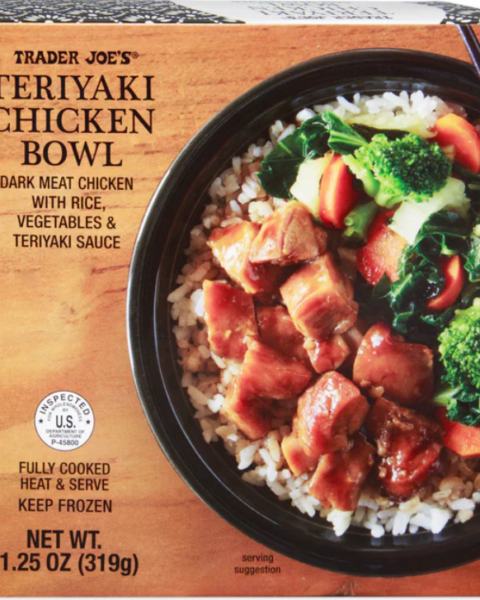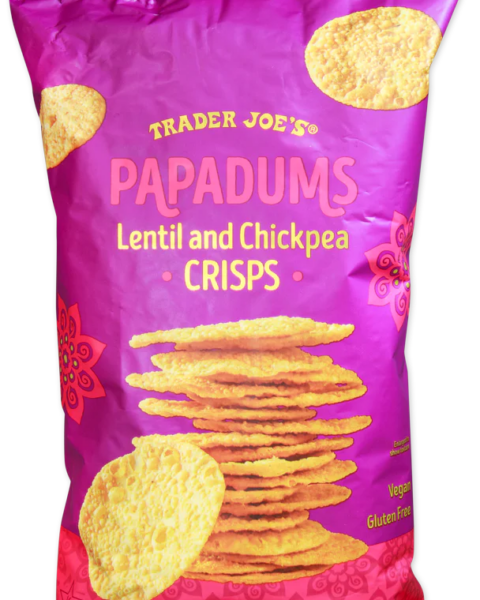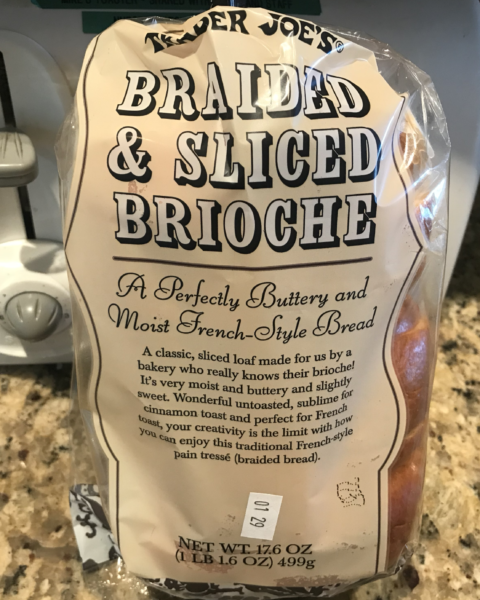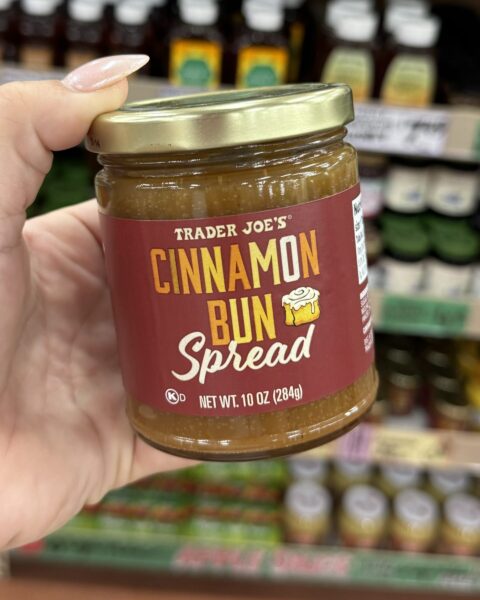Known for having a sweet, almost lobster-like flavor, Argentinian red shrimp are bigger than other varieties of shrimp or even prawns. Due to their size and flavor, they’re a very popular variety of shrimp, farmed or wild caught off the very far southern tip of Argentina. Imported all over the world, Argentinian red shrimp have even shown up in the frozen section at Trader Joe’s.
As of February 2023, Trader Joe’s carries two different products containing Argentinian red shrimp–Raw Argentinian Red Shrimp and Argentinian Red Shrimp with Ginger Garlic Butter & Togarashi Style Seasoning.
Togarashi, also called sichimi, is a Japanese spice blend commonly known as “Japanese 7 spice.” It’s made primarily from chili powder.
Both of these shrimp offerings can be found in the frozen section near the other frozen seafood and meat. They are packaged raw and must be properly cooked and heated prior to eating. Consuming raw or undercooked seafood can easily lead to food poisoning.
A 1-lb bag of Raw Argentinian Red Shrimp costs $11.99 at Trader Joe’s, while the seasoned Togarashi-style version is priced at $7.99 for 9 ounces.
A Note On Seafood Sustainability
Unfortunately, for those invested in responsible consumerism and the health of our ecosystems, Argentinian red shrimp are one seafood variety best avoided.
According to SeafoodWatch.org, the trawling method used to harvest Argentinian red shrimp has immense adverse effects on other marine species such as sharks and stingrays. Argentinian red shrimp are also becoming the victims of extreme overfishing, causing damage to the overall population and potential damage to the ecosystem as whole.
TJ’s Raw Argentinian Red Shrimp
To give you a full report on the Argentinian red shrimp varieties at Trader Joe’s, I bought and sampled both (although I’m not sure I’ll continue to buy them considering what I’ve now learned about the unsustainable nature of red shrimp trawling!).
First, let’s look at the unseasoned raw shrimp…
Ingredients & Nutrition
As you can see, these shrimp contain zero added ingredients other than salt. Seafood is already fairly high in sodium for obvious reasons, so as a result, each serving (six shrimp) contains 320 mg of sodium. Keep this in mind before adding additional salt to your recipe.
You’ll also be consuming 60 calories (10 calories per shrimp) from 0.5 grams of fat, 130 mg of cholesterol, and 14 grams of protein per serving.
High-quality shrimp like these are generally considered quite healthy, as they are a lean source of protein containing several important vitamins and minerals.
How To Prepare
To prepare these shrimp, you will first need to defrost them. Until you’re ready to cook with them, they should be kept in the freezer. However, you can also thaw them in the refrigerator.
The quickest way to defrost these shrimp is to place them into a strainer and set them under a cold tap for about three minutes while frequently rotating the bowl for an even thaw. According to the product’s packaging, these shrimp should not be refrozen after being thawed. If you do not use all of your shrimp at once, you can store the remaining thawed shrimp in the refrigerator for up to three days.
Once my shrimp were thawed, I threw them into a pan over medium-high heat with a pad of butter.
I wanted to make sure my shrimp were fully cooked, so I kept them in the pan (turning them over from time to time) until they had darkened in color and no longer had a raw appearance or texture. I probably cooked them for about 10 minutes total, which is on the longer side when it comes to sautéeing shrimp. If you have a kitchen thermometer, the inside of each shrimp should be at least 145°F when fully cooked.
Another popular way to prepare raw shrimp is by poaching them. Poaching is the process of gently boiling something in water and is often used as a preparation method for eggs. For a closer look at how to poach shrimp, check out this post from Cook the Story.
Of course, there are plenty of other ways to prepare your shrimp as well. They can be sautéed (like I did), grilled or barbecued on skewers, deep fried, or even baked in the oven.
And of course, they can be prepared in the air fryer too for maximum ease and perfect texture. Here are some instructions from Momma Fit for how to prepare Argentine red shrimp in the air fryer in just 10 minutes.
My Review
Once cooked, I decided to add my shrimp to a pasta dish with sautéed kale and garlic and a light pesto sauce. It was delicious!
These shrimp have a delicate flavor in my opinion, not as “shrimpy” or seafood look as other shrimp or prawns I’ve had. The texture is meaty and lobster-like and they definitely made for a great protein boost in my pasta.
To be honest, I think I prefer a stronger shrimp flavor, so the only letdown for me was that they were almost too delicate. But for many palates, the lack of a strong seafood flavor will likely be a bonus.
I can imagine these shrimp being fantastic marinated in some strong spices and grilled on a skewer. Because they come raw and unseasoned, they are super versatile and could be added to a wide range of recipes.
TJ’s Argentinian Red Shrimp with Ginger Garlic Butter
These shrimp are the same as the ones that come in the 1-lb bag, but they’ve been heavily seasoned prior to packaging.
As a fan of garlic and ginger, I was super excited to try them out.
Ingredients & Nutrition
As you can see from this photo, these shrimp contain a ton of ingredients. Unfortunately, they contain dairy (butter) as well as sesame seeds and corn starch. So, they might not be suitable for people with certain food allergies.
It’s also important to note that some people have severe allergies to shellfish such as shrimp and could incur serious allergic reactions. If you experience hives, swelling, or trouble breathing after eating these shrimp, go to the hospital immediately.
Nutrition wise, these shrimp are a lot richer than their unseasoned counterparts. From one half of the package (which I’d say makes sense as one serving), you will be consuming 160 calories from 7 grams of fat, 190 mg of cholesterol, 200 mg of sodium, 2 grams of carbohydrates, and 21 grams of protein.
Despite being richer than the unseasoned shrimp, these shrimp are still fairly moderate when it comes to calorie, fat, cholesterol, and sodium content. They are also very low in carbs and high in protein.
Cooking Instructions
According to the packaging, these shrimp should only be thawed under refrigeration immediately prior to cooking. The reason why they do not recommend thawing in the sink is because the shrimp are coated in seasoning. However you can technically thaw these without removing the packaging by placing them in a strainer or bowl and running a cold tap over them. However, the process will take a bit longer than it does with unpackaged shrimp. Thawing packaged shrimp with cold water could take up to 45 minutes.
The simplest way to thaw these shrimp is by placing the package into your refrigerator the night before you plan to cook with them. Remember that once you thaw your shrimp, they should not be refrozen and can only be kept in the fridge for up to 3 days.
To prepare my shrimp, I thawed them in the sink and then added them to a pan over medium to high heat with a little bit of olive oil. While the packaging only suggests cooking each shrimp for 1 to 2 minutes per side, I cooked them for a bit longer to be on the safe side. If you have a kitchen thermometer, make sure the shrimp reach 145°F.
Prior to cooking my shrimp, I had already sautéed up some kale, shiitake mushrooms, and garlic in the same pan. I removed my veggie sauté and let it sit in a covered bowl while I prepared the shrimp. I also cooked some pasta to tie the dish together.
Here is a look at the finished product…
My Review
Eating these shrimp within a couple days of trying the raw Argentinian shrimp from Trader Joe’s made it clear that this is just a seasoned version of those other shrimp. While these garlic butter shrimp were certainly tasty and satisfying, I would be more likely to recommend buying the one pound bag of unseasoned shrimp and adding your own seasonings or marinades.
That said, these shrimp were super delicious and I definitely didn’t have a bad time eating them. Again, as with the other shrimp I tried, the shrimp flavor is very delicate, so you get more of a texture and light flavor than a strong seafood flavor. For those looking for a strong flavor, I would try another shrimp variety. However, if you enjoy eating seafood but would rather not get the taste of the whole ocean in your mouth, these are definitely a great choice.
These Reddit users echo my feelings that these aren’t the most flavorful shrimp in the world…
Especially at the price, I think these shrimp are a decent pick for a nice meal split between two people. However I’m not sure I will continue to buy Argentinian shrimp considering the environmental implications.
For a look at some of the best-tasting shrimp varieties caught in the US, check out this article from Alabayou.
Recipes
Especially if you buy TJ’s Raw Argentinian Red Shrimp, you’ll probably find yourself wondering what to do with them.
Luckily, shrimp is one of the most versatile seafoods and can be used for hundreds of different recipes from many cuisine types.
Argentinian red shrimp can be used in…
- Tacos
- Pasta
- Jambalaya
- Stir fry
- Fried rice
- Salads
Argentinian red shrimp are also popular as an affordable substitute for lobster. If you’re a fan of lobster rolls, try this 5-star recipe from Big Delicious Life for Argentine Red Shrimp Rolls. The recipe even mentions Trader Joe’s as a good place to source your shrimp.
If you’re like me, you probably love tacos. Check out this recipe for Argentinian Shrimp Tacos from Ciao Florentina.
If you’re looking for something simple to prepare on the grill, try this recipe from Grillseeker for Marinated Grilled Argentinian Red Shrimp.

